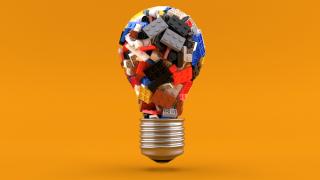
Engineering is an industry that is constantly fuelling innovation across all sectors - and construction is no exception. Green, renewable energy is a huge priority for the world at large, meaning that it's absolutely essential that we continue to develop new ways to power buildings on both a residential and commercial basis. However, drastic developments may be imminent in this field, thanks to the ongoing development of a 'smart' brick.
A group of researchers in the US have found a way to turn an ordinary red brick into a battery, which could be used to power the homes of the future. This exciting new triumph could revolutionise the way we use energy and facilitate more widespread use of green energy across both commercial and domestic landscapes.
How Do Smart Bricks Work?
READ: A Greener Approach to Injection Moulding
Researchers developed smart bricks by coating red bricks with Pedot - a conductive polymer which is absorbed by the surface of the brick, allowing them to store energy in a similar manner to a battery. When connected to a renewable energy source such as solar panels, these bricks can be recharged and used to power the building itself. Researchers have also commented that the iron oxide found within red bricks further facilitates this process, providing an ideal environment for the storage of energy and turning the bricks themselves into supercapacitors, which are capable of storing a larger amount of energy than other types of capacitor.
Researchers developed smart bricks by coating red bricks with Pedot - a conductive polymer which is absorbed by the surface of the brick.
Researchers have illustrated the success of the smart brick's functionality by using them to power an LED light, giving insight into the potential of this project as a mainstream source of future energy supply.
This proposal has opened up a whole new world of possibilities within the realms of construction and energy, and could lead to a more seamless relationship between the two. The very notion that smart bricks could be used to power homes and businesses is undoubtedly ambitious; however, the simplicity of the solution means that it is certainly a feasible goal which has sustainability at its core.
READ: Composites - A Design Revolution
When Will Smart Bricks Become Available?
At the moment, this project is still very much in the development stages, meaning that we're still a long way from seeing smart bricks used within construction settings. However, the concept of the design is possibly the most innovative creation to grace the construction sector in recent times and the potential for the scale of this project is astronomical.
There is also great news surrounding the potential price of energy-storing bricks. The use of a straightforward coating to turn bricks into energy-storing devices means that production costs per brick can be kept very low. Therefore, property development and construction companies can offer consumers an affordable solution to their energy woes, all the while promoting greener energy and reducing energy costs per household.
Smart Bricks for Smart Homes?
READ: Tackling the Fears Surrounding Automation
The smart brick would allow the home or premises themselves to become a smart device.
Feeding into our modern obsession with smart technology within businesses and households - think Internet of Things (IOT) and the Fourth Industrial Revolution - the smart brick would allow the home or premises themselves to become a smart device, meaning that there's a lot of buzz about this ongoing project in more ways than one.
It would allow homes to become more or less self-sustainable from an energy point of view and - when paired with other technology - could potentially afford users enhanced metrics and greater insight into their energy usage. There is certainly plenty of potential for the smart brick to replace existing energy sources, especially those which are less eco-friendly, spelling plenty of tangible benefits for both consumers and the planet.
Time will tell whether smart bricks can be developed for use on a larger scale, however, the concept certainly holds a lot of promise indeed.
